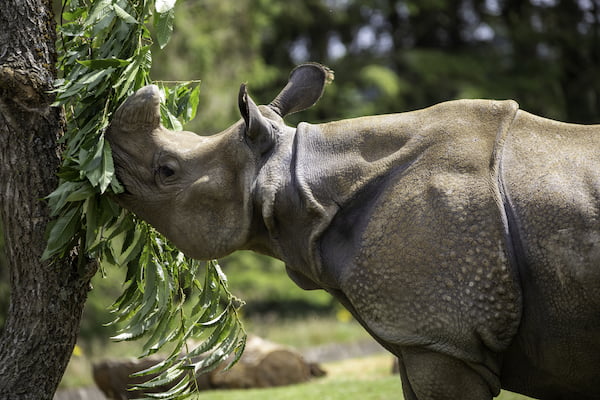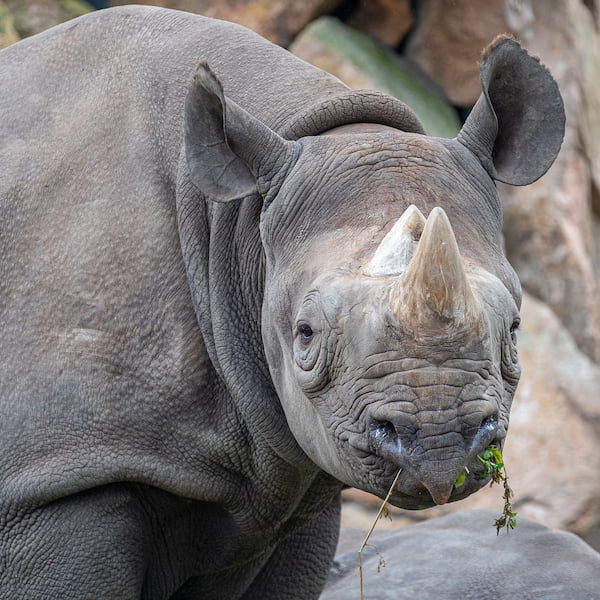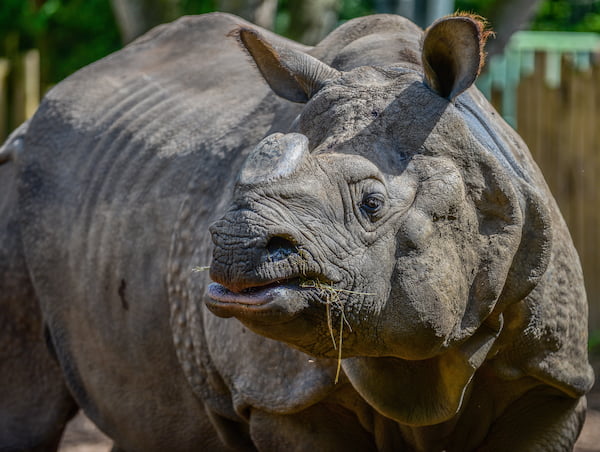In recent years, the Javan Rhino has faced numerous challenges that have put its very existence at risk. From habitat destruction to poaching threats, this majestic species has seen a significant decline in its population. However, despite these challenges, there have been dedicated conservation efforts put in place to protect and save the Javan Rhino from extinction. With the implementation of reintroduction programs and ongoing conservation initiatives, there is hope for the future of this critically endangered species. In this blog post, we will explore the current endangered status of the Javan Rhino, the various conservation efforts being made to save it, the threats of habitat destruction and poaching, and the importance of reintroduction programs in the fight to save this iconic species. Join us as we delve into the world of the Javan Rhino and learn what can be done to ensure its survival for generations to come.Discover the endangered status of a species, conservation efforts, habitat destruction, poaching threat, population decline, and reintroduction programs in this informative blog post.

Javan Rhino is one of the most critically endangered species on the planet, with only a few dozen individuals left in the wild. The main reason for their dwindling numbers is habitat loss due to deforestation and agricultural expansion. This destruction of their natural habitat has pushed the Javan Rhino to the brink of extinction.
Conservation efforts are underway to protect the remaining Javan Rhino population. These efforts include creating protected areas, monitoring and tracking individual rhinos, and working with local communities to reduce human-wildlife conflict. Despite these efforts, the future of the Javan Rhino remains uncertain.
Poaching remains a significant threat to the Javan Rhino population. Their horns are highly prized in traditional medicine, leading to illegal hunting and trade. This illegal activity further endangers an already vulnerable species, making it even more challenging to ensure their survival in the wild.
Without immediate and concerted action, the Javan Rhino population will continue to decline, potentially leading to their extinction in the near future. It is vital that we prioritize conservation efforts and work together to protect this iconic species before it's too late.
Javan Rhino Conservation Efforts are crucial in ensuring the survival of this critically endangered species. The small population of Javan Rhinos, estimated to be less than 70 individuals, faces numerous threats in the wild. Conservationists are working tirelessly to protect the remaining rhinos through various strategies.
One of the key conservation efforts for Javan Rhinos is habitat protection. Due to rampant deforestation and human encroachment, the natural habitat of these rhinos has been greatly reduced. Conservation organizations are working to establish protected areas and corridors to ensure the rhinos have enough space to roam and access to food sources.
In addition to habitat protection, anti-poaching measures are also essential for the survival of Javan Rhinos. Poaching for their horns, which are highly prized in traditional medicine, remains a major threat to the species. Conservationists are implementing strict monitoring and enforcement strategies to crack down on poaching activities and apprehend poachers.
Furthermore, community engagement and education play a vital role in conservation efforts for Javan Rhinos. Involving local communities in conservation activities and raising awareness about the importance of protecting these rare creatures can help foster a sense of stewardship and coexistence among humans and wildlife.

The Javan Rhino is facing a serious threat due to habitat destruction. The unique ecosystem that the Javan Rhino calls home is being rapidly destroyed by human activities such as deforestation, agriculture expansion, and urbanization. As a result, the rhinos are losing their natural habitat at an alarming rate, leaving them with limited space to roam and find food.
Furthermore, the loss of habitat also leads to increased human-wildlife conflicts as the rhinos come into closer contact with human settlements in search of food. This not only poses a danger to the rhinos themselves but also to the local communities living in the area.
Habitat destruction is a major factor contributing to the decline in Javan Rhino population numbers. Without their natural habitat, the rhinos struggle to find suitable areas to breed and raise their young, further exacerbating the already critical situation.
Conservation efforts are crucial in addressing the issue of habitat destruction and ensuring the survival of the Javan Rhino. By protecting and restoring their natural habitat, we can help secure a future for this endangered species.
The Javan Rhino faces a severe poaching threat due to the high demand for its horns in traditional Asian medicine. Poachers target the Javan Rhino for its horn, which is believed to have healing properties, despite there being no scientific evidence to support this claim. This illegal trade has led to a decline in the Javan Rhino population, putting the species at risk of extinction.
In an effort to combat poaching, conservation organizations and government agencies are increasing their efforts to protect the remaining Javan Rhinos. Anti-poaching patrols are conducted in the rhino's habitat to deter poachers and remove snares and traps. Strict laws and penalties are also implemented to discourage poaching activities.
Education and awareness programs are essential in addressing the poaching threat to the Javan Rhino. By raising awareness about the importance of protecting endangered species and the negative impacts of poaching, communities and individuals can become advocates for the conservation of the Javan Rhino.
It is crucial for everyone to recognize the critical situation facing the Javan Rhino due to poaching and take action to protect this iconic species. Through collaborative efforts and continued conservation measures, we can work towards ensuring a future for the Javan Rhino in the wild.
Javan Rhino population has experienced a significant decline over the years due to various threats such as habitat loss, poaching, and natural disasters.
Human activities, such as deforestation and agricultural expansion, have led to the destruction of crucial habitats for the Javan Rhino, reducing their population numbers.
Illegal poaching for their horns, which are highly valued in traditional medicine, has also had a devastating impact on the Javan Rhino population, further contributing to their decline.
Efforts are being made by conservation organizations and governments to protect the remaining Javan Rhinos and increase their population through breeding programs and habitat restoration.
Reintroduction Programs play a crucial role in the conservation efforts of endangered species like the Javan Rhino. These programs aim to increase the population of a species by releasing captive-bred individuals back into the wild. This helps to boost genetic diversity and promote a sustainable and healthy population.
One of the main goals of reintroduction programs for the Javan Rhino is to establish new populations in protected areas where the species once thrived. By carefully selecting release sites and monitoring the progress of reintroduced individuals, conservationists can ensure the success of these programs and help the species recover from the brink of extinction.
Reintroduction programs also play a key role in raising awareness about the plight of endangered species and the importance of conservation. By involving local communities in these efforts, conservationists can build support for protecting the habitats of the Javan Rhino and ensure the long-term survival of the species.
In conclusion, reintroduction programs are a vital component of conservation efforts for the Javan Rhino. By releasing captive-bred individuals back into the wild, these programs help to increase the population and genetic diversity of the species, as well as raise awareness about the importance of protecting endangered species and their habitats.
